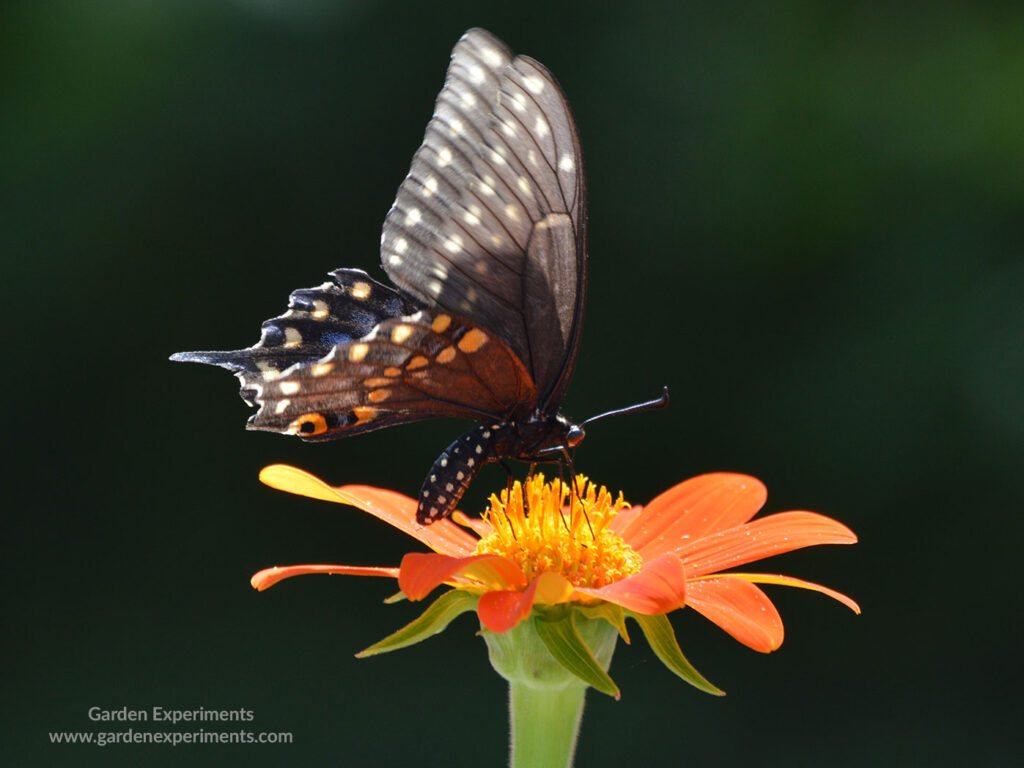I love the multiple, bright orange flowers that this annual plant produces, but it’s not just me! Mexican sunflower (Tithonia) is by far the most popular plant for pollinators in my butterfly garden.
Mexican Sunflower is a Great Pollinator Plant
The hummingbirds, finches, bees, and butterflies constantly fly in and around the flowers of Tithonia, stopping to feed on several. This afternoon, I saw a ruby-throated hummingbird feeding on one of the flowers.
Tithonia is excellent for attracting and feeding pollinators. Plant it with a few zinnias, and you’ll have a busy pollinator garden. I have also started seeing goldfinches feeding on the seeds. The bright yellow color of the goldfinch stands out against the orange of Tithonia.
Grow Tithonia from Seed
I started the seeds indoors under my grow light and then transplanted them throughout my garden. They are easy to grow from seed. Collect the seeds from spent blooms and you can replant them the following year.
Mexican Sunflower Description
Tithonia rotundifolia is an annual, grown from seed. It blooms continuously in the summer to early- to mid-fall.
Tithonia Flowers & Leaves
The flowers of Mexican sunflower are bright orange with an orange center. They are about 3 to 4 inches in diameter. The flowers are what make this plant a showstopper. You’ll get multiple blooms from each plant and they are quite attractive to pollinators.
The leaves are hairy on the upper side, similar to the texture of a sunflower leaf. The leaves are about 4 or 5 inches in length and equally wide, though they are arrowhead-shaped. This is where the plant gets its name. The leaves are very similar to those found on sunflowers.
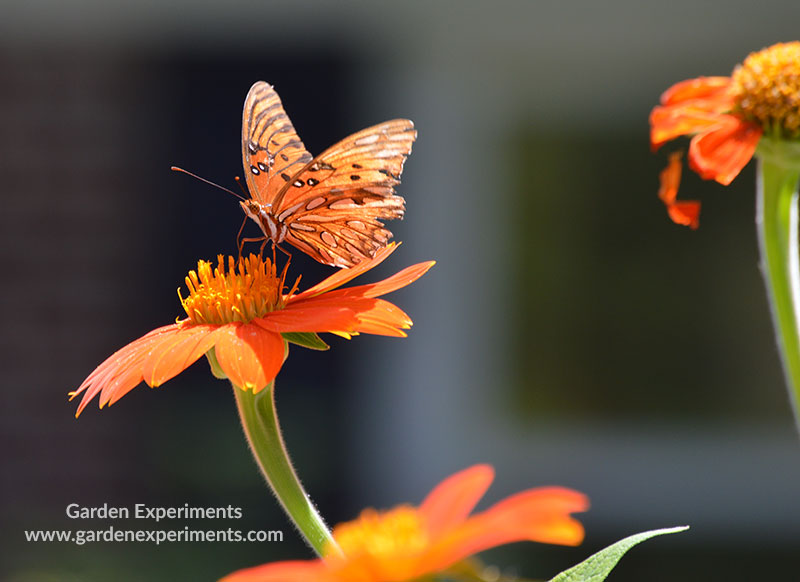
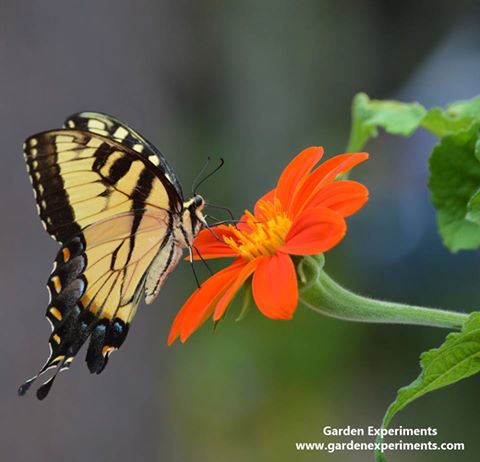
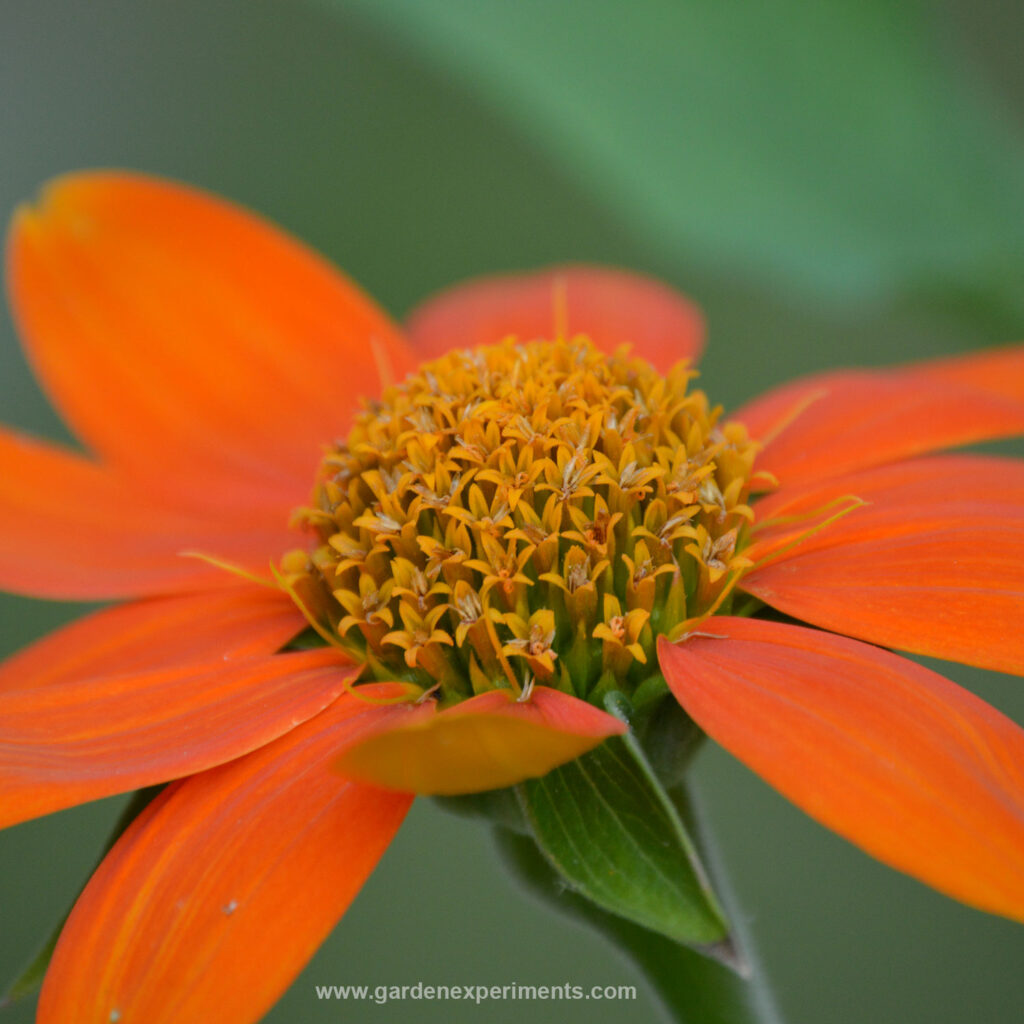
Height of Mexican Sunflowers Plants
This is a very tall plant. If you don’t want a 4 to 6-foot tall plant in your garden that gets a couple of feet wide, this is not the plant for you (although there are some smaller cultivars). If you don’t mind its height, it is worth it.
I suggest planting several together to create a solid clumping of orange flowers. The plants themselves aren’t much to look at (they’re gangly), but each plant produces multiple blooms from branches off the main stem.
How to Care for Mexican Sunflower
This plant is very low maintenance and has no natural insect or disease problems. It prefers full sun and well-drained soil. It is drought tolerant and deer resistant, excellent for our southern summers and those hungry four-legged friends.
The bloom time for this annual plant is mid-summer to early fall.
How to Grow Mexican Sunflower
Plant your seeds in full sun after the threat of frost is over and cover with a sprinkling of soil. Keep the soil watered, but not wet, until the seedling is established. Keep your plant evenly watered until they are a few inches tall, and then they should be able to handle normal weather conditions.
If the plant gets buffeted by winds and starts to lean, you may need to stake your stems to keep it upright. Many of mine fell over during a strong storm a few nights ago. I had to stake them up to keep them from crushing the plants below them.
You can collect the seeds from your flowers and dry them for storage. Be sure they are completely dry before putting them away for next year.
Fun Fact – Composite Flowers
Like other sunflowers, asters, and daisies, this bloom is made up of two types of flowers! The petal-like parts that create the border of the flower are ray flowers. The center of the bloom is made up of tiny little disk flowers. If you look closely, you’ll see little protruding flowers in the middle of the bloom. Learn more about these composite flowers.
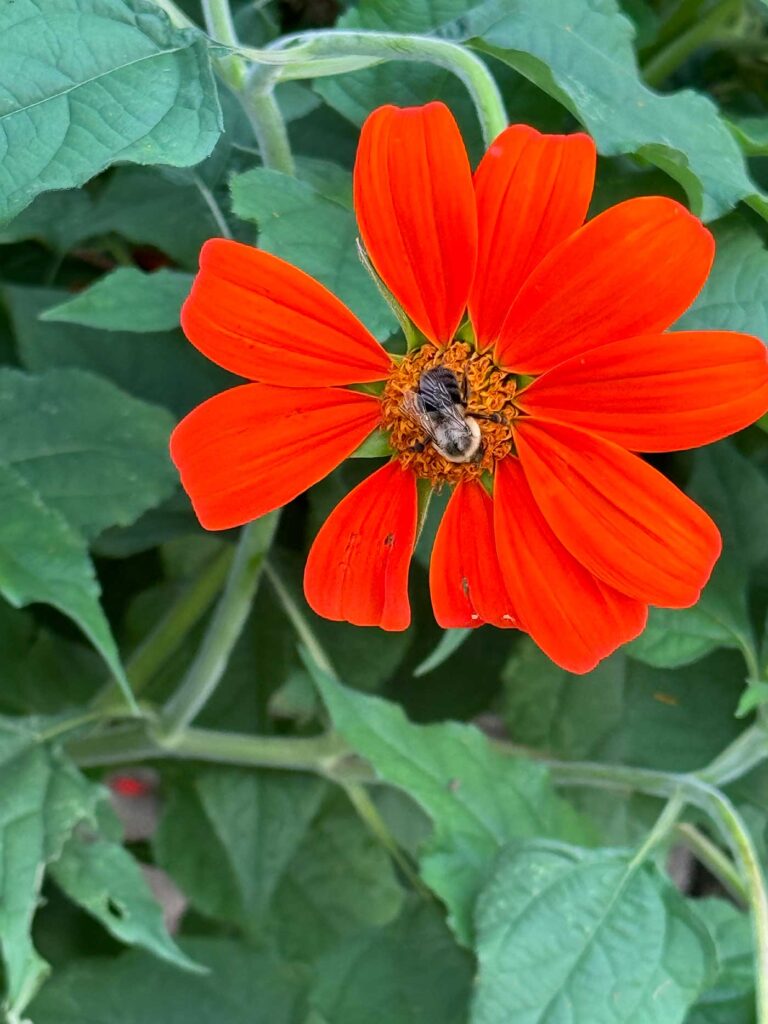
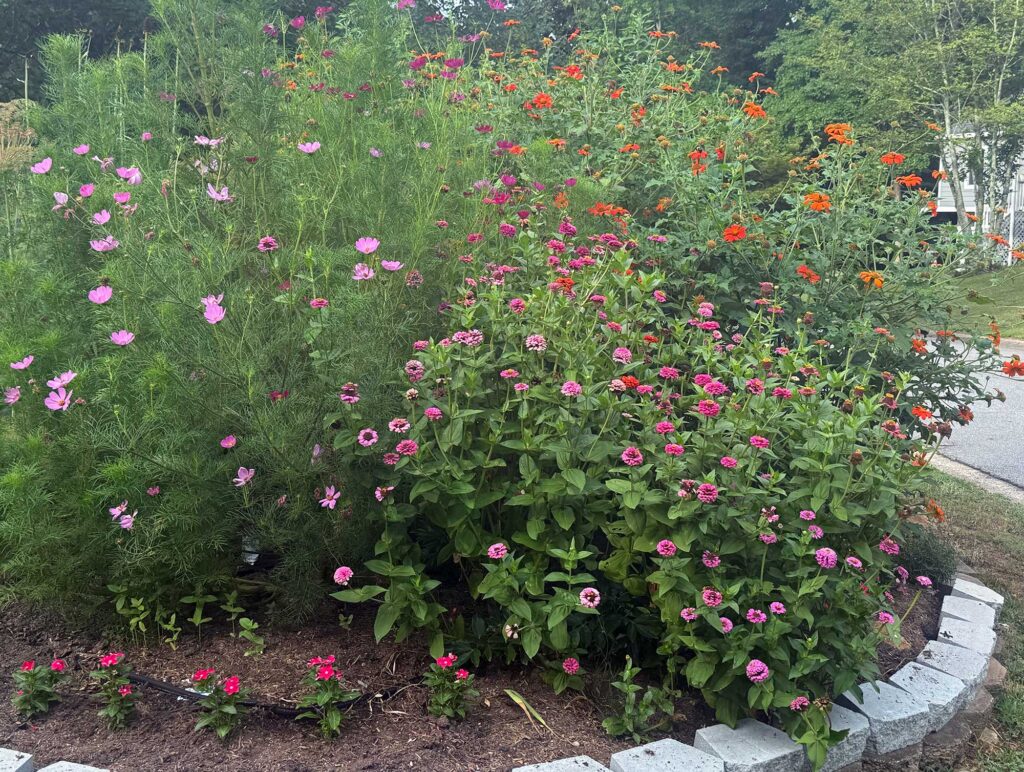
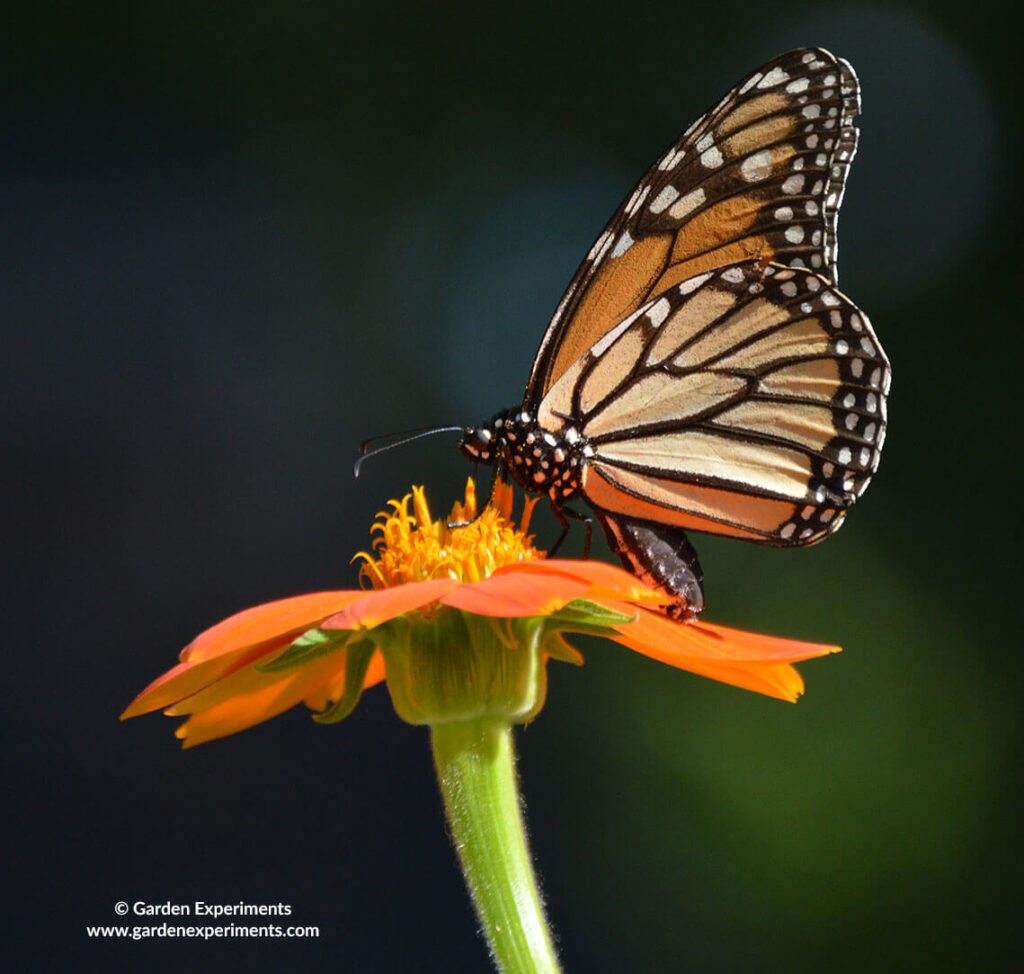
Mexican sunflower – Tithonia rotundifolia
Native woody vine with red, tubular flowers
USDA Zones
Hardy in USDA zones 2 to 11
Native Range
Mexico and Central America
Water Requirements
Drought-tolerant
Wildlife Value
Deer-resistant
Hummingbirds, bees, & butterflies feed on nectar
Goldfinches eat the seeds
Bloom Time
Mid-summer to Fall
Soil Types
Well-drained, average soil
Plant Type
Annual
Herbaceous
Light Requirements
Full sun
Plant Height
4 to 6 feet in height
Check out this amazing video of multiple monarchs feasting on a patch of Mexican sunflowers. Video from Monarch Butterfly Garden.

